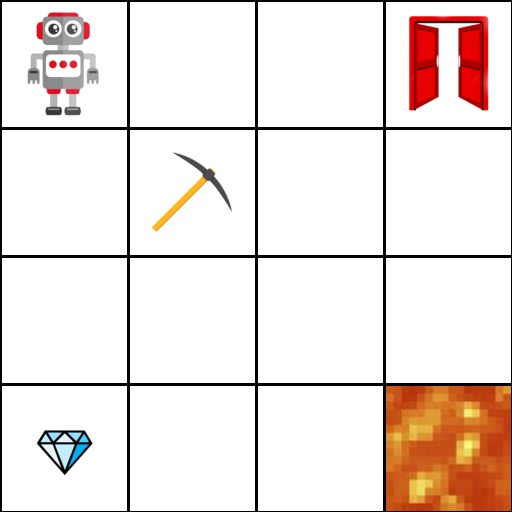Neural-Symbolic Recursive Machine for Systematic Generalization

47
🧪
Sign in to get full access
Overview
- Current learning models struggle with human-like systematic generalization, particularly in learning compositional rules from limited data and applying them to novel combinations.
- The authors introduce the Neural-Symbolic Recursive Machine (NSR), which integrates neural perception, syntactic parsing, and semantic reasoning through a Grounded Symbol System (GSS) to enable the emergence of combinatorial syntax and semantics directly from training data.
- The NSR's modular design and inductive biases of equivariance and compositionality allow it to excel at diverse sequence-to-sequence tasks and achieve unparalleled systematic generalization.
Plain English Explanation
The paper presents a new AI model called the Neural-Symbolic Recursive Machine (NSR) that is designed to overcome a key limitation of current learning models - their struggle with systematic generalization. Systematic generalization refers to the ability to learn compositional rules from limited data and then apply those rules to novel combinations, in a human-like way.
The core of the NSR is a Grounded Symbol System (GSS) that allows it to directly learn the building blocks of language - the combinatorial syntax and semantics - from the training data. This is done through the integration of neural perception, syntactic parsing, and semantic reasoning in a modular design.
By incorporating inductive biases like equivariance and compositionality, the NSR is able to excel at a wide range of sequence-to-sequence tasks, such as semantic parsing, string manipulation, and arithmetic reasoning, while demonstrating unparalleled systematic generalization capabilities.
Technical Explanation
The paper introduces the Neural-Symbolic Recursive Machine (NSR), a novel AI model that aims to address the limitations of current learning models in systematic generalization.
At the core of the NSR is a Grounded Symbol System (GSS) that allows the model to directly learn the combinatorial syntax and semantics from training data, rather than relying on pre-defined rules. This is achieved through the integration of three key components: neural perception, syntactic parsing, and semantic reasoning.
The neural perception module handles the processing of input data, the syntactic parsing module infers the grammatical structure of the input, and the semantic reasoning module assigns meaning to the parsed input. These components are trained synergistically through a novel deduction-abduction algorithm, which enables the emergence of the compositional building blocks of language.
The modular design of the NSR, combined with the inductive biases of equivariance and compositionality, grants it the expressiveness to handle diverse sequence-to-sequence tasks and achieve superior systematic generalization compared to contemporary neural and hybrid models.
The authors evaluate the NSR's performance across four challenging benchmarks: SCAN for semantic parsing, PCFG for string manipulation, HINT for arithmetic reasoning, and a compositional machine translation task. The results demonstrate the NSR's ability to outperform state-of-the-art models in terms of generalization and transferability.
Critical Analysis
The paper presents a compelling approach to addressing the systematic generalization challenge, which is a critical limitation of current learning models. The authors' focus on directly learning the compositional building blocks of language through the Grounded Symbol System is a promising direction that could have far-reaching implications for fields like natural language processing and reasoning.
However, the paper does not delve deeply into the potential limitations or caveats of the NSR approach. For example, it would be valuable to understand the scalability of the model, its performance on larger and more complex datasets, and any potential trade-offs or challenges in the implementation of the deduction-abduction training algorithm.
Additionally, the paper could benefit from a more thorough discussion of the broader implications and potential applications of the NSR beyond the specific benchmarks presented. Exploring how the model's capabilities could be leveraged in real-world scenarios or integrated with other AI techniques would further strengthen the contribution of this research.
Conclusion
The Neural-Symbolic Recursive Machine (NSR) introduced in this paper represents a promising approach to addressing the systematic generalization challenge faced by current learning models. By integrating neural perception, syntactic parsing, and semantic reasoning through a Grounded Symbol System, the NSR is able to directly learn the compositional building blocks of language and apply them with unparalleled generalization capabilities.
The model's strong performance across diverse sequence-to-sequence tasks suggests that the NSR's design, with its inductive biases of equivariance and compositionality, could have significant implications for the development of more robust and human-like AI systems. As the field of AI continues to evolve, research like this, which focuses on advancing the fundamental capabilities of learning models, will be crucial in driving progress toward truly intelligent and versatile artificial agents.
This summary was produced with help from an AI and may contain inaccuracies - check out the links to read the original source documents!
Related Papers
🧪

47
Neural-Symbolic Recursive Machine for Systematic Generalization
Qing Li, Yixin Zhu, Yitao Liang, Ying Nian Wu, Song-Chun Zhu, Siyuan Huang
Current learning models often struggle with human-like systematic generalization, particularly in learning compositional rules from limited data and extrapolating them to novel combinations. We introduce the Neural-Symbolic Recursive Machine (NSR), whose core is a Grounded Symbol System (GSS), allowing for the emergence of combinatorial syntax and semantics directly from training data. The NSR employs a modular design that integrates neural perception, syntactic parsing, and semantic reasoning. These components are synergistically trained through a novel deduction-abduction algorithm. Our findings demonstrate that NSR's design, imbued with the inductive biases of equivariance and compositionality, grants it the expressiveness to adeptly handle diverse sequence-to-sequence tasks and achieve unparalleled systematic generalization. We evaluate NSR's efficacy across four challenging benchmarks designed to probe systematic generalization capabilities: SCAN for semantic parsing, PCFG for string manipulation, HINT for arithmetic reasoning, and a compositional machine translation task. The results affirm NSR's superiority over contemporary neural and hybrid models in terms of generalization and transferability.
Read more4/30/2024


0
Evaluating Structural Generalization in Neural Machine Translation
Ryoma Kumon, Daiki Matsuoka, Hitomi Yanaka
Compositional generalization refers to the ability to generalize to novel combinations of previously observed words and syntactic structures. Since it is regarded as a desired property of neural models, recent work has assessed compositional generalization in machine translation as well as semantic parsing. However, previous evaluations with machine translation have focused mostly on lexical generalization (i.e., generalization to unseen combinations of known words). Thus, it remains unclear to what extent models can translate sentences that require structural generalization (i.e., generalization to different sorts of syntactic structures). To address this question, we construct SGET, a machine translation dataset covering various types of compositional generalization with control of words and sentence structures. We evaluate neural machine translation models on SGET and show that they struggle more in structural generalization than in lexical generalization. We also find different performance trends in semantic parsing and machine translation, which indicates the importance of evaluations across various tasks.
Read more6/21/2024


0
A Neural Rewriting System to Solve Algorithmic Problems
Flavio Petruzzellis, Alberto Testolin, Alessandro Sperduti
Modern neural network architectures still struggle to learn algorithmic procedures that require to systematically apply compositional rules to solve out-of-distribution problem instances. In this work, we focus on formula simplification problems, a class of synthetic benchmarks used to study the systematic generalization capabilities of neural architectures. We propose a modular architecture designed to learn a general procedure for solving nested mathematical formulas by only relying on a minimal set of training examples. Inspired by rewriting systems, a classic framework in symbolic artificial intelligence, we include in the architecture three specialized and interacting modules: the Selector, trained to identify solvable sub-expressions; the Solver, mapping sub-expressions to their values; and the Combiner, replacing sub-expressions in the original formula with the solution provided by the Solver. We benchmark our system against the Neural Data Router, a recent model specialized for systematic generalization, and a state-of-the-art large language model (GPT-4) probed with advanced prompting strategies. We demonstrate that our approach achieves a higher degree of out-of-distribution generalization compared to these alternative approaches on three different types of formula simplification problems, and we discuss its limitations by analyzing its failures.
Read more7/15/2024


0
Neural Reward Machines
Elena Umili, Francesco Argenziano, Roberto Capobianco
Non-markovian Reinforcement Learning (RL) tasks are very hard to solve, because agents must consider the entire history of state-action pairs to act rationally in the environment. Most works use symbolic formalisms (as Linear Temporal Logic or automata) to specify the temporally-extended task. These approaches only work in finite and discrete state environments or continuous problems for which a mapping between the raw state and a symbolic interpretation is known as a symbol grounding (SG) function. Here, we define Neural Reward Machines (NRM), an automata-based neurosymbolic framework that can be used for both reasoning and learning in non-symbolic non-markovian RL domains, which is based on the probabilistic relaxation of Moore Machines. We combine RL with semisupervised symbol grounding (SSSG) and we show that NRMs can exploit high-level symbolic knowledge in non-symbolic environments without any knowledge of the SG function, outperforming Deep RL methods which cannot incorporate prior knowledge. Moreover, we advance the research in SSSG, proposing an algorithm for analysing the groundability of temporal specifications, which is more efficient than baseline techniques of a factor $10^3$.
Read more8/19/2024